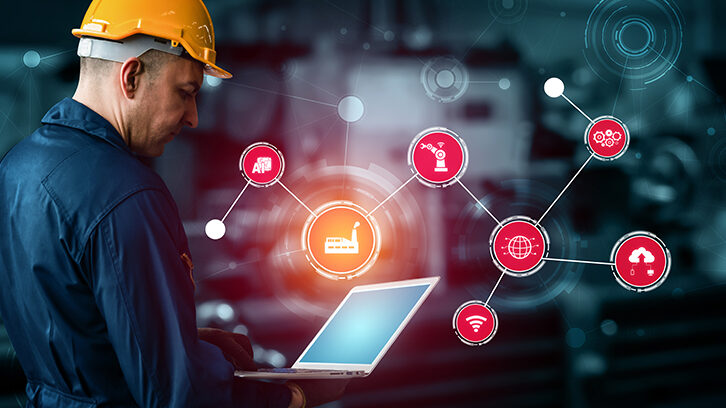Last week, VelocityEHS hosted an exciting new webinar which took an in-depth look at some of the emerging technologies that are shaping the future of industrial hygiene (IH) and EHS management. Hosted by Dave Risi, CSP, CIH and Principal Solutions Strategist for IH at VelocityEHS, the session delivers a common-sense breakdown of today’s complex EHS technology landscape. The webinar specifically looks at some innovative analytical systems and data collection devices that are driving innovation in the field of EHS, and also provides practical guidance on how you can begin applying these new technologies to your own EHS programs.
You can watch the full webinar on-demand but in the meantime, here are some of the highlights:
Navigating a Complex Technology Landscape
Once considered the stuff of science fiction, technologies like AI, machine learning (ML) and big data are becoming essential for EHS professionals who increasingly need to make sense of the vast volumes of data coming at us from the mobile devices and apps, computer-controlled equipment, wearables, IoT sensors and other EHS technologies permeating the workplace.
But unless you’re a data scientist, topics like these can feel a little mysterious, and maybe even a little intimidating. As Dave explains, there’s a lot of confusion out there about what these terms actually mean, but having a solid understanding of these concepts and technologies is the first step to being able to apply them to our EHS data and decision-making processes.
That’s why a good portion of the webinar focuses on providing attendees with a solid foundation of knowledge around these emerging technologies, distinguishing what they are and what they are not, and providing several examples of how we’re already using them in our daily lives to illustrate their application and benefits.
Integrating AI into EHS Programs
If you’re thinking about implementing an AI project to improve data management and enhance your EHS program, there are a few things that you should first understand to lay the groundwork for a successful implementation. Dave takes attendees through the AI project planning and implementation process, explaining not only how to get started but how to maintain the project and continuously improve it over time.
A crucial step in this process is building your AI project team. Dave zeroes in on this step, taking time to discuss each of the key team roles and how they coordinate throughout the planning and implementation process while also offering practical tips for effective communication, change management and stakeholder engagement that will keep your team moving together in the right direction throughout the process.
Future Trends
The session concludes by exploring how these emerging technology trends are impacting the fields of IH and EHS to help EHS professionals anticipate how their roles may change in the future. With an exponential influx of data from the continuing introduction of EHS technologies like wearable sensors and IoT devices in the workplace, EHS professionals are presented with an incredible opportunity to extract valuable insights that were not previously attainable. For instance, IH equipment manufacturers are developing better sensor technology and incorporating its data with geolocation tracking devices to provide real-time intelligence into workplace exposures. These benefits have been widely demonstrated, and now implemented, in a variety of industries around the world.
This growing mountain of data is also prompting companies to recruit more and more full-time data scientists and engineers to develop the analytical frameworks needed to extract those insights and drive more informed business decisions. In fact, the U.S Bureau of Labor Statistics (BLS) predicts the data science profession will grow nearly 30% over its current size by 2026. EHS professionals will need to establish a close working relationship with their data scientists to turn the raw EHS data they’re collecting into actionable information, and they themselves will likely need to become more familiar with the analytical technologies if they aim to stay relevant in a rapidly evolving, data-driven business environment.
All that said, it’s important to recognize that these emerging data technologies represent a powerful new tool for EHS professionals that, with some thoughtful planning and coordination on the part of your AI project team, can unlock new levels of EHS program efficiency.
Want to learn more about the technologies shaping the future of IH and EHS? Click here to watch the full on-demand webinar.
VelocityEHS Industrial Hygiene Solutions
The VelocityEHS Accelerate® Platform offers innovative, easy-to-use Industrial Hygiene software solutions built on AIHA best practices, helping you easily assess and control workplace stressors, automate time-consuming IH tasks and maintain a world-class IH program.
To learn more about VelocityEHS IH Solutions and how they can support the future of your IH program, visit www.EHS.com
